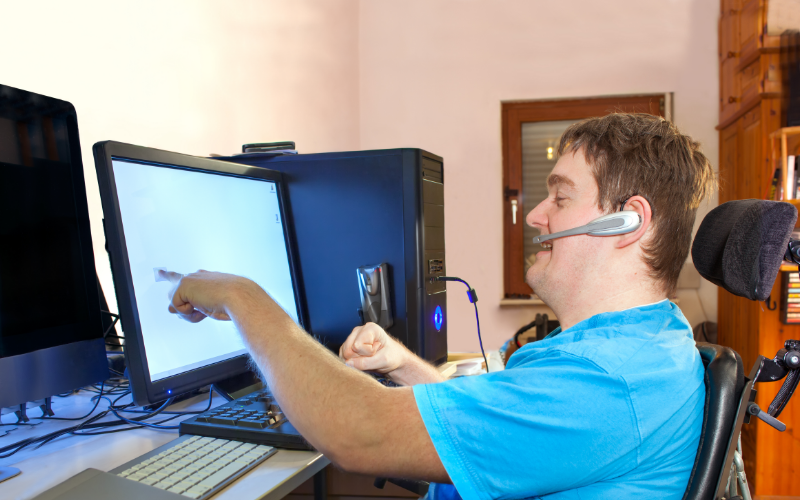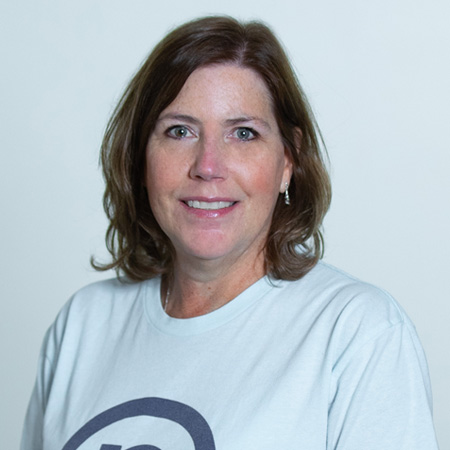Avoiding litigation may be an essential priority for a company’s accessibility efforts, but this is a short-sighted view to what is more effectively played as a long game. Accessibility is a sure path to boosting your organization’s brand, expanding audiences for your products and services, improving customer and associate satisfaction, improving organizational culture, providing opportunities for innovation and creativity, and even contributing to society’s greater good.
Marc Thorson is an IT software architect and the grassroots leader of Nelnet’s digital accessibility team. With 20-plus years of front-end development experience – and 14 years of experience leading an accessibility team that’s grown from one to 13 people – Thorson has become a well-known accessibility expert within highly regulated fields such as student loan servicing and numerous other industries during his time with Great Lakes Educational Loan Services and now Nelnet. For more than a decade, the Department of Education, Federal Student Aid, and their business partners have turned to accessibility champion Thorson for his expertise and collaboration with their accessibility teams. Thorson and Nelnet’s Accessibility team also support external clients across a broad range of industries, providing compliance support, accessibility training, and more.
To learn more about why accessibility matters so much, we spoke with Thorson about the importance of accessibility, where accessibility is headed, how Nelnet can help, and how to make your organization an accessibility leader.
What is your role and how did it come about?
Marc Thorson (MT): My experience was largely focused around the student loan industry since 2000. I started as a full stack developer and, in 2009, I kind of grassroots-created the accessibility program at Great Lakes and my role as a natural evolution from front-end development. I could see the need for more specialization and identified accessibility was a need we could fill. There were a number of other folks who were instrumental, too – Jeni McDonald [now a manager for Nelnet’s Unifi Design Studio], in particular. I would say the two of us created the first accessibility checklist for the company and we were off to the races. Several years later, we added another teammate to the team, Stacy Sporie, and she’s now the accessibility team lead. Currently, we’re at 13 full-time staff plus a couple of part-time associates.
Why is accessibility so important?
MT: Our motto is, “We want to break down barriers and make everything helpful and enjoyable for everyone.” That’s what our content services are intended for. We don’t want any unintentional side effects for accidentally doing it wrong. We want to think of our entire audience and people of all abilities – and develop our products and services with that in mind. The nice side effect of that is we improve experiences for everybody. It makes things easier to understand for all users and creates a nicer experience in general.
Will accessibility be more important in the future than it is today? Why?
MT: The more we become connected by technology and interaction, and the more people become aware of the diverse skill sets and abilities of folks, the more we need to leverage accessibility to create a more productive and enjoyable life for all of us. We don’t want to leave anyone out – that’s being a detriment to society and not impacting any of us positively. Accessibility is part of a great cultural shift that we need to continue building upon.
Society is pushing toward more inclusive design and how to make things good for everyone. Technology-wise, there’s a greater push toward machine-learning and artificial intelligence helping bridge the gap in some areas to make technology adapt more quickly to our various human abilities. It’s something that we keep an eye on and, at Nelnet, we plan to be leaders in finding the right technology to support that.
What are the main areas where an organization needs to think about accessibility?
MT: Clearly in web development, all the software your organization uses, every piece of web and print content, your meeting functionality, employee onboarding process, training, and operational aspects like soft skills, the way we communicate with our customers – all facets of your organization. At some point, we’re all going to be impacted. I was born with a disability, but hearing and vision can go with aging, you may be injured temporarily, you may be a carrier of a disease that shows up later and impacts your abilities. It’s more than just the 26% of the population the Department of Health and Human Services refers to. These others changes can be harder to measure.
I don’t know about you, but I turn on closed captioning to add understanding even though I don’t need it. We all leverage these features for a better experience. Everyone uses Siri and things like it – this was originally an accessibility innovation. For many, a certain path is easier – we’re trying to open as many of those paths as we can.
What’s your personal approach to accessibility – and how does that lead to broad success?
MT: A lot of folks in the accessibility realm, along with many businesses, are scared about lawsuits and compliance. While we want to talk about that to some degree, I prefer to lean the other way and be more forward thinking and consider why you should do it in the long run rather than just to fix short-term issues like a stop-gap solution.
I like to promote accessibility as a way to innovate. It lends itself well toward innovation. If we can get other organizations thinking like we do, just imagine how that’s going to help society, help businesses, the economy, and everything else. So you’re opening doors rather than eliminating barriers.
How does Nelnet help other organizations with compliance and learning how to be accessible?
MT: Our main focus is to do detailed analysis and show them where they need to be compliant and provide recommendations to improve. We also consult with businesses on processes to help them improve their own accessibility programs so they can become more self-sufficient and better for their own customers. It’s in our best interest to meet our goal and to make our clients better at it, too – not to just offload everything to us. From what I’ve seen, once you help your clients learn how to be accessible, you often end up getting more business. If you’ve solved a problem somewhere, you can move to another one somewhere else that’s more important. If you’re doing things for the right reasons, it’s always a win-win.
How can an organization succeed at accessibility?
You need the technical skill set and awareness in general, but to truly make it work, you want to make it part of everything you do. You want it part of your heart and soul. This is why we do things – to serve our customers – and we don’t discriminate one from another. We want to serve everybody. It’s good for business and it’s good for our own well-being.
What do you want people to know about Nelnet’s expertise in accessibility?
MT: Our main focus with clients is on compliance – on evaluating and providing detailed analysis and recommendations for a business’ online products and content. We have a lot of other services that we can target, too. We tag PDFs for accessibility and do a number of other document remediation services. We do accessibility testing with native users. We can help author VPATs [Voluntary Product Accessibility Templates], ACRs [Accessibility Conformance Reports], and EEAAPs [Equally Effective Alternate Access Plans]. We consult; we train; we can help develop strategies and policies. We continue to delve more and more into mobile testing needs.
What does Nelnet do to increase their accessibility expertise compared with other organizations?
MT: It’s mostly our values and culture, our overall commitment to people. I think that lends itself well to accessibility. We are also a very strong technology company and, in terms of digital accessibility, you need both. What makes us well suited to accessibility is that we have a diverse audience that we’re committed to supporting and we also have the technical skills to make that happen.
In what specific ways does Nelnet take accessibility into account?
MT: Our mission and core values prioritize serving customers, associates, and communities and creating awesome experiences. But then, as a diversified technology company, Nelnet is committed to innovation – and you can’t be on the leading edge of digital accessibility without technology and innovation. For example, we host hackathons and week-long innovation events that all associates – not just IT folks – are encouraged to participate in. We want to identify areas where processes and experiences can be improved, where technology can make things easier – and associates in all areas bring great ideas to the table.
But creating a culture of accessibility is bigger than those things – it’s also about belonging. All 10 of our associate resource groups are open to anyone – and one of them is DANCE (Disabilities, Access, Neurodiversity, and Caregiver Empowerment). Initiatives like this help create positive experiences and a sense of belonging for everyone.
What can an organization do to be an accessibility leader?
MT: I’d say companies that demonstrate an authentic commitment to people have the potential to be leaders in accessibility, but you need that technological strength to lead. On top of that, you need to spark the curiosity and creativity of employees to find those better paths and better experiences for customers and your organization. And then, to really stand out, you need a culture that truly embraces the idea of inclusivity.



